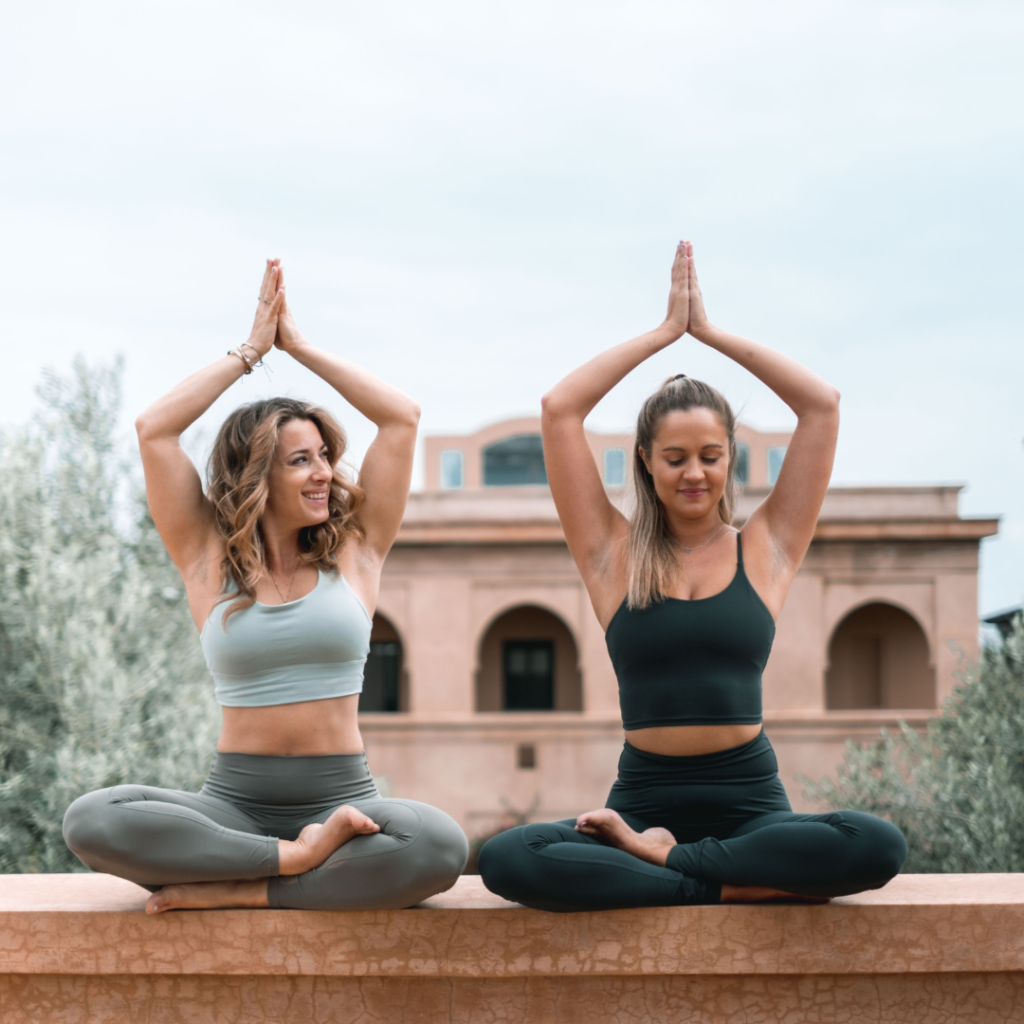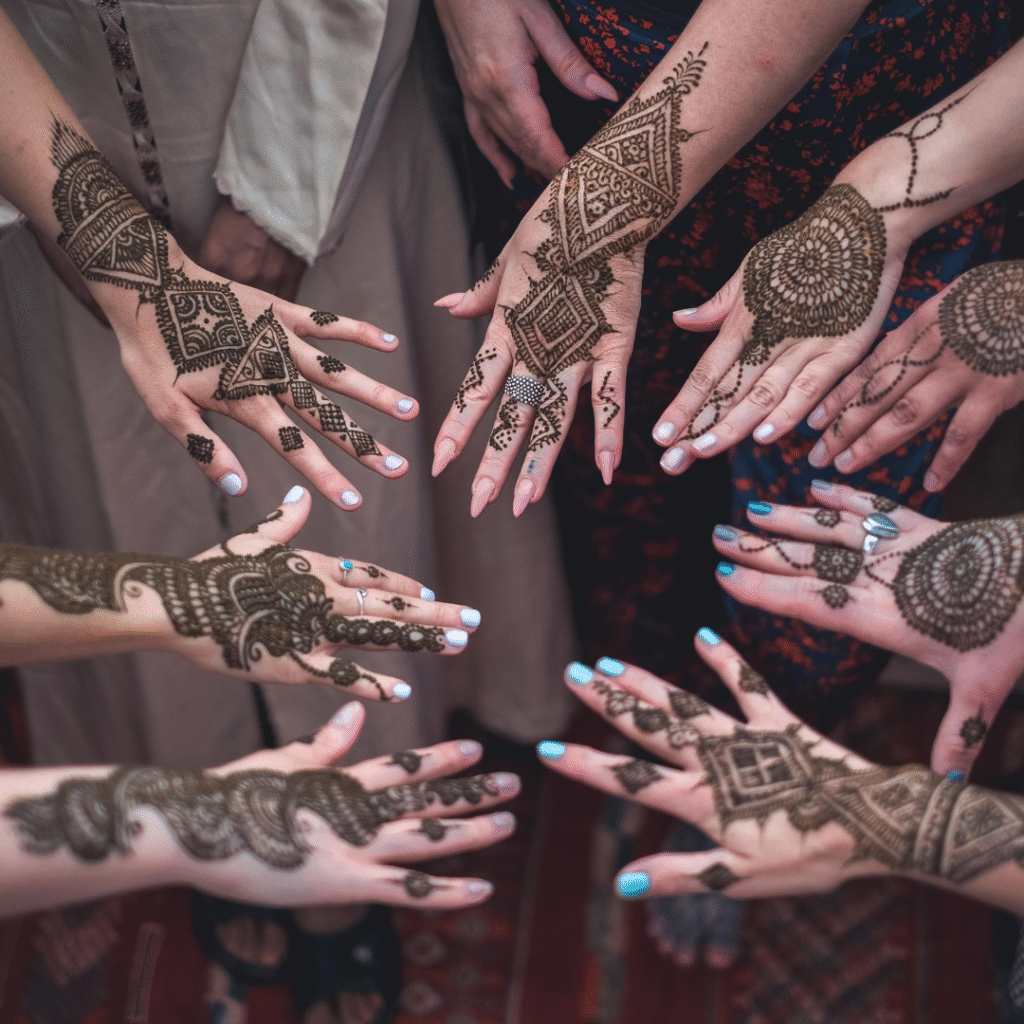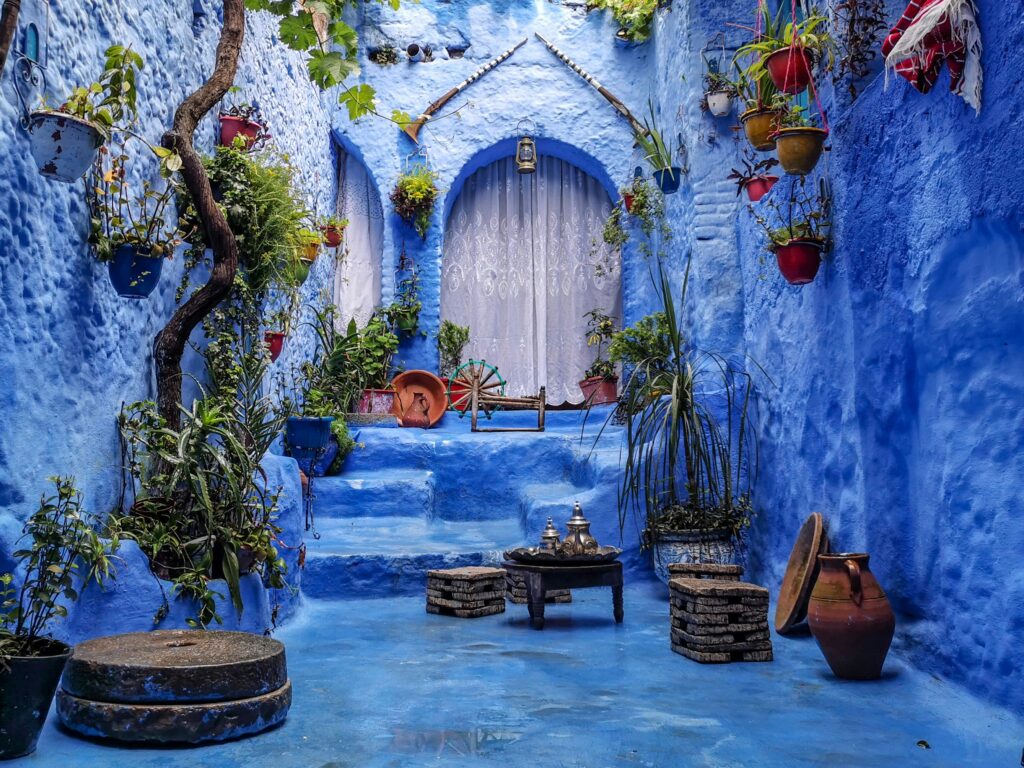
Yoga & Wellness Retreats in Morocco: Between Desert and Ocean
Morocco occupies a unique position at the crossroads of Africa, Europe, and the Arab world—a land where the Sahara Desert stretches endlessly south, the Atlas Mountains rise snow-capped to the sky, and the Atlantic Ocean crashes against dramatic coastlines. It’s a country of profound contrasts: ancient medinas where life moves at medieval pace exist alongside modern cities, barren deserts give way to lush valleys, and the call to prayer echoes across landscapes that have witnessed millennia of human passage.
For those seeking yoga and wellness retreats, Morocco offers something that more familiar European destinations cannot—a sense of genuine otherness, of stepping into rhythms and aesthetics fundamentally different from Western life. The intense colors, the layered scents of spice markets and orange blossoms, the hospitality that treats guests as sacred, the desert silence that seems to still the mind without effort—these create conditions for transformation that go beyond what any yoga practice alone can achieve.
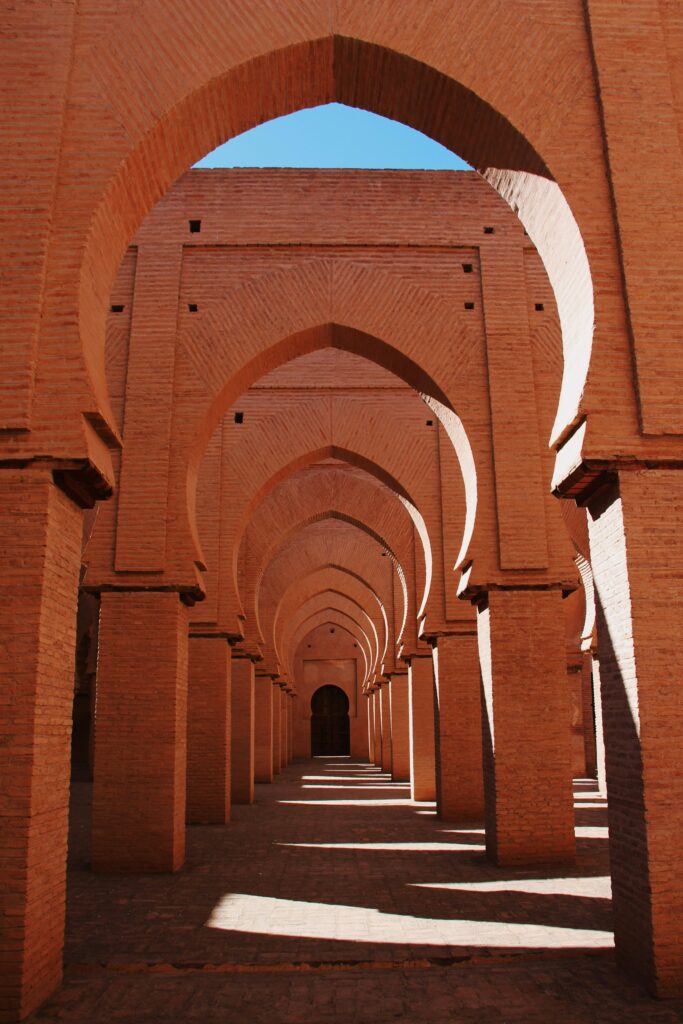
Moroccan culture has its own ancient wellness traditions that complement contemporary yoga beautifully. The hammam—the traditional bathhouse ritual of steam, exfoliation, and deep cleansing—parallels yoga’s emphasis on purification. The mint tea ceremony teaches presence and the art of slowing down. The architecture itself, with its geometric patterns and play of light and shadow, seems designed to quiet the restless mind. And the landscape—whether mountains, desert, or ocean—invites contemplation through its stark beauty and vast scale.
Top Destinations for Yoga Retreats in Morocco
Marrakech: The Red City’s Hidden Gardens
Marrakech assaults the senses in the best possible way—the chaos of Jemaa el-Fnaa square with its snake charmers and storytellers, the labyrinthine souks overflowing with carpets and spices, the relentless energy of a city that’s been a trading crossroads for a thousand years. Yet behind the high walls that line every street lie secret gardens and riads—traditional Moroccan houses built around interior courtyards—that offer profound quiet just steps from the madness.
Yoga retreats in Marrakech occupy these hidden spaces, creating sanctuaries where you practice surrounded by orange trees and fountains, where the only sounds are birds and water, where the city’s intensity becomes backdrop rather than distraction. Many retreat centers are renovated riads in the medina itself, allowing you to experience authentic Marrakech while having a peaceful base for practice and rest.
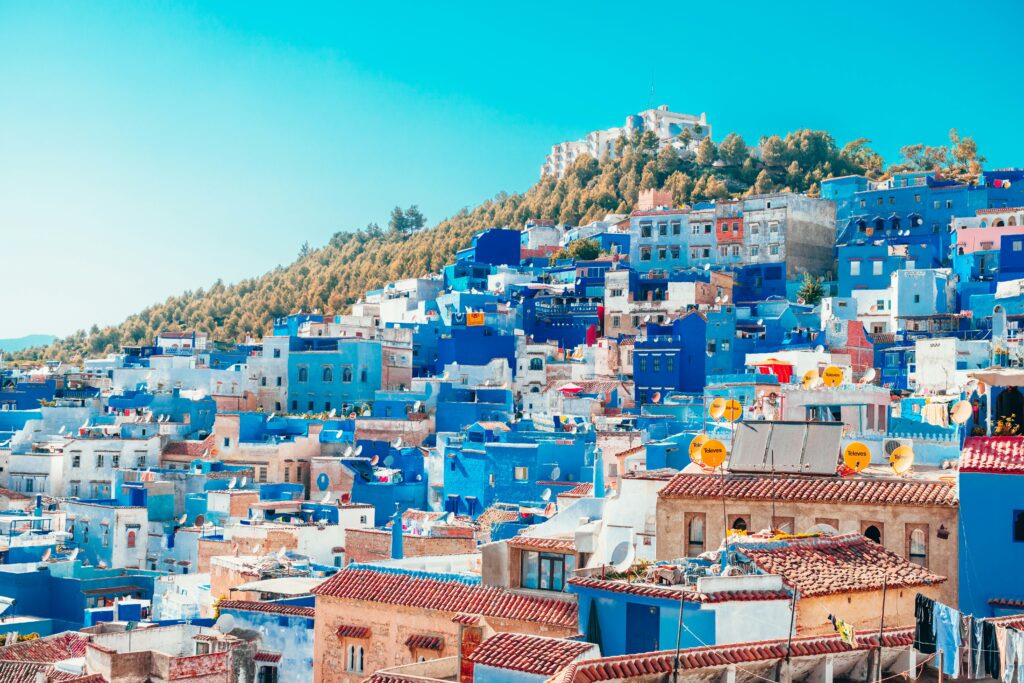
What makes Marrakech special for retreats is the combination of accessibility—it’s Morocco’s most connected city with direct flights from across Europe and beyond—and the opportunity to immerse in Moroccan culture alongside your practice. You can spend mornings in yoga and afternoons exploring souks, visit ancient palaces and gardens, experience hammam rituals, and eat exceptional food ranging from street stalls to sophisticated restaurants. The city offers that rare balance: enough stimulation to feel you’re truly experiencing Morocco, enough retreat space to do deep inner work.
Essaouira: Where Wind Meets Water
If Marrakech is intensity, Essaouira is its opposite—a laid-back coastal town where constant Atlantic wind keeps temperatures moderate and creates a pace of life that’s profoundly relaxed. The medina here feels manageable and welcoming rather than overwhelming, with its blue and white color scheme creating a Mediterranean vibe despite being firmly African. The long beach stretches for kilometers, perfect for walking meditation and watching windsurfers and kitesurfers dance across the waves.
Essaouira has attracted artists, musicians, and seekers for decades, giving it a bohemian character that makes it feel comfortable for international yoga practitioners. The town is small enough to navigate easily, safe enough to wander freely, and beautiful enough to inspire daily gratitude. Retreat centers here range from beachfront properties where you practice with ocean views to renovated riads in the medina where rooftop terraces catch the sea breeze.
The wind that defines Essaouira—the “Alizee” trade winds—creates its own teaching. Like the Greek Meltemi, it demands you find your center, maintain your balance, work with rather than against natural forces. Many retreats incorporate beach activities—surfing, kitesurfing, long coastal walks—alongside yoga, recognizing that movement and challenge in nature support inner work as much as stillness on the mat.
Atlas Mountains: High Altitude Sanctuary
Just an hour from Marrakech’s chaos, the High Atlas Mountains offer landscapes that feel worlds away—Berber villages clinging to mountainsides, valleys green with terraced gardens, peaks that stay snow-covered well into spring, and hiking trails that wind through terrain barely touched by modernity. The air is thinner here, crisper, and somehow cleaner in a way that makes breathing exercises feel more potent.
Mountain retreats in Morocco occupy converted kasbahs, traditional Berber guesthouses, and purpose-built eco-lodges that blend into the landscape. Many sit at elevations between 1,200 and 2,000 meters, high enough to escape lowland heat but not so high that altitude becomes uncomfortable. The views—across valleys to distant peaks—provide natural meditation objects, and the silence broken only by the call to prayer from distant villages creates space for deep listening.
What distinguishes Atlas Mountain retreats is immersion in Berber culture alongside nature immersion. You’re not in a tourist area but actual communities where traditional life continues much as it has for centuries. Locals might be your hosts, sharing meals and stories, teaching you about medicinal plants that grow wild on the hillsides, demonstrating bread-baking in outdoor ovens. The hospitality is genuine, the pace unhurried, and the sense of having stepped outside normal time is profound.
Agadir: Modern Comfort Meets Ocean Energy
Agadir offers something different—a modern Moroccan city rebuilt after a devastating 1960 earthquake, with wide boulevards, contemporary hotels, and a long sandy beach that’s perfect for yoga practice and swimming. It lacks the medieval character of Marrakech or the artistic charm of Essaouira, but it provides reliable infrastructure, year-round sunshine, and easy access to both ocean and mountain activities.
For travelers wanting wellness alongside convenience—direct international flights, familiar amenities, less culture shock—Agadir delivers. Yoga retreats here tend toward resort-style operations with good facilities, professional service, and programming that balances practice with recreation. The climate is ideal year-round, making Agadir attractive during Europe’s winter when other Moroccan destinations can be cold.
Day trips from Agadir reach remarkable destinations—the coastal town of Taghazout for surfing, Paradise Valley for hiking and swimming in natural pools, traditional Berber villages in the foothills. The city itself provides excellent restaurants, markets, and the kind of infrastructure that makes combining wellness retreat with family travel or business feasible.
Sahara Desert: Silence and Stars
The Moroccan Sahara—accessible from various points but most commonly through Merzouga or M’Hamid—offers retreat experiences unlike anywhere else on earth. The desert’s vast emptiness, the silence so complete it becomes almost tangible, the night skies unpolluted by any light beyond stars so numerous they seem impossible—these create conditions for meditation and introspection that require no technique or teaching. The desert itself does the work.
Desert retreats typically involve traveling from cities to the edge of the erg (sand sea), then continuing by 4×4 or camel to camps set among the dunes. Accommodations range from basic Berber tents to luxury desert camps with proper beds, private bathrooms, and careful attention to comfort within the constraints of location. You practice yoga on the sand, meditate watching sunrise over dunes, and spend evenings around fires under stars.
What the desert teaches—impermanence, vastness, humility, presence—comes not through instruction but through experience. Watching wind reshape dunes overnight, feeling your smallness against the landscape’s scale, sitting with the particular quality of desert silence—these bypass intellectual understanding and work directly on consciousness. Many people report that brief desert retreats produce disproportionate impact, the intensity of the environment accelerating inner work that might take months elsewhere.
Taghazout: Surf Village Turned Yoga Haven
North of Agadir, the small fishing village of Taghazout has evolved into Morocco’s surf capital and, increasingly, a destination for yoga retreats that combine Atlantic waves with mountain backdrops. The village retains its relaxed character despite growing popularity, with a bohemian international community, consistent surf, and a pace of life that feels like permanent vacation.
Yoga and surf retreats dominate Taghazout’s wellness scene, attracting younger, more active practitioners who want their downtime adventurous rather than purely restful. The village has excellent surf schools, numerous yoga studios and retreat centers, healthy restaurants, and the kind of traveler infrastructure that makes extended stays comfortable. Many people come for a week and end up staying months.
The landscape—dramatic coastline, nearby Paradise Valley for hiking, the Anti-Atlas mountains visible inland—provides endless opportunities for outdoor activities alongside practice. The water is cool but swimmable year-round, the surf is consistent, and the light has that particular quality of places where desert meets ocean. For active practitioners wanting community and adventure alongside yoga, Taghazout offers ideal conditions.
Experience Types: Finding Your Moroccan Practice
Yoga and Hammam: Traditional Purification
The hammam—Morocco’s traditional bathhouse—parallels yoga’s cleansing practices beautifully. The ritual involves hours of heat, scrubbing with rough mitts that remove dead skin, ghassoul clay masks, argan oil massage, and the profound relaxation that follows deep purification. Combining daily yoga with regular hammam treatments creates a program of detoxification that works on physical, energetic, and even emotional levels.
Many Moroccan yoga retreats incorporate hammam as essential rather than optional, recognizing that the two practices support each other. Yoga opens the body and prepares it for deep cleansing; hammam releases what practice has loosened. Together they create a rhythm of purification and renewal that participants often describe as more effective than either practice alone.
Yoga and Surf: Atlantic Waves
Morocco’s Atlantic coast—particularly around Taghazout, Essaouira, and Imsouane—offers world-class surf conditions alongside yoga retreat infrastructure. The combination attracts practitioners seeking active wellness, who find meditation in riding waves as much as in seated practice. The water is cool (wetsuits required much of the year) but clean, the breaks are numerous and varied, and surf schools cater to all levels.
Surf and yoga retreats follow natural rhythms—morning yoga before the wind builds, midday surf sessions, afternoon rest or exploration, evening restorative practice. The physical demands of surfing complement yoga’s flexibility work, while the mental focus required for wave-riding mirrors meditation’s concentration practices. Many participants discover that the combination produces deeper presence than either activity alone.
Desert Meditation: Silence and Solitude
Specialized desert retreats focus on meditation and silence, using the Sahara’s natural conditions to support intensive practice. These programs typically involve minimal yoga asana—the desert’s heat and sand make vigorous physical practice impractical—and maximum meditation, pranayama, and contemplation. Days might include walking meditation across dunes, sitting meditation facing infinite horizons, star meditation at night.
The desert strips away everything unnecessary, creating natural conditions for examining what remains. Without distraction, entertainment, or the usual ways of filling time and attention, you’re left with yourself more directly than most environments allow. For those drawn to contemplative practice over physical yoga, desert meditation retreats offer unmatched conditions.
Culinary and Cultural Immersion
Moroccan cuisine—with its emphasis on fresh ingredients, complex spicing, slow cooking, and communal eating—provides perfect foundation for food-focused retreats. Programs might include shopping in souks, cooking classes with local women, visits to argan cooperatives, bread-making workshops, and explorations of how Moroccan food culture embodies mindfulness, hospitality, and joy.
These retreats recognize that nourishment extends beyond the mat, that learning to cook and eat mindfully is yoga practice translated into daily life. The tagines simmering for hours, the mint tea ceremony with its ritual pouring, the sharing of food from communal platters—these teach patience, presence, and connection in ways that complement formal practice beautifully.
When to Go: Timing Your Moroccan Retreat
Morocco’s climate varies dramatically by region and season, making timing crucial for optimal retreat experience.
Spring (March-May): Ideal for most regions. Temperatures are moderate (18-25°C in most areas), landscapes are green after winter rains, and tourist numbers are manageable. The Atlas Mountains show their best face with snowmelt feeding valleys, wildflowers blooming, and hiking conditions perfect. Desert temperatures are comfortable. This is arguably Morocco’s best season for retreats.
Summer (June-August): Varies dramatically by location. Coastal areas like Essaouira and Taghazout remain comfortable thanks to Atlantic winds and cool water. Marrakech becomes intensely hot (often exceeding 38°C), though mornings and evenings are pleasant and riads with pools provide relief. The Atlas Mountains offer escape from lowland heat. The desert is generally too hot for comfortable retreat work. European summer holidays bring crowds and higher prices.
Autumn (September-November): Another excellent season. September retains summer warmth without the intensity, October provides ideal temperatures nearly everywhere, and November begins cooling but remains comfortable. Crowds thin after summer, prices moderate, and there’s a sense of harvest abundance. The desert becomes accessible again as temperatures drop to comfortable ranges.
Winter (December-February): Challenging but beautiful. The Atlas Mountains can be cold with snow, Marrakech experiences cool nights and occasional rain, and northern regions get genuine winter weather. However, southern areas including Agadir and the desert remain mild and sunny. Winter offers the cheapest prices, smallest crowds, and a different Morocco—fires in hearths, snow-capped mountain views, the particular clarity of cold air. For those who don’t mind cooler weather and want authentic experience without tourist masses, winter has appeal.
Practical Considerations
Morocco is Muslim-majority, and while tourism areas are accustomed to international visitors, basic cultural sensitivity matters. Dress modestly outside retreat centers—covered shoulders and knees for both men and women, particularly in non-tourist areas. During Ramadan (dates shift yearly), many restaurants close during daylight hours, though tourist establishments usually remain open.
The currency is the Moroccan dirham (MAD), with exchange rates roughly 10 dirhams to 1 euro. ATMs are widely available in cities, less so in rural areas. Cash is essential for souks, taxis, and small purchases. Tipping is customary and expected.
Moroccan hospitality is genuine and generous, but it comes with expectations. Bargaining in souks is expected and even enjoyable once you understand it as social interaction rather than combat. Guides and helpers will appear offering assistance—sometimes genuinely helpful, sometimes angling for tips. Learning to navigate these interactions with grace and humor is part of the Morocco experience.
Language presents minimal barrier in tourist areas where French, English, and Spanish are widely spoken. In rural regions, Darija (Moroccan Arabic) and Berber languages dominate, but warmth and gesture communicate across language gaps. Learning a few Arabic phrases—salam alaikum (hello), shukran (thank you), inshallah (God willing)—opens doors and demonstrates respect.
Morocco’s yoga retreat prices range from budget-friendly to luxury, typically €500-2,500 for a week depending on location, accommodation quality, and inclusions. The country offers exceptional value compared to European destinations, with beautiful properties, excellent food, and authentic experiences at prices that would buy basic accommodations elsewhere.
Finally, come with openness to difference. Morocco will challenge assumptions, push you outside comfort zones, and reward patience and curiosity. The call to prayer five times daily might wake you or punctuate practice. Meal times follow Moroccan rather than Western schedules. Things move at their own pace. This isn’t inefficiency but a different relationship with time—one that yoga practice helps you appreciate rather than resist. Morocco teaches by immersion, and the lessons extend far beyond the yoga mat into how you move through the world, how you encounter otherness, and how you discover that presence and peace are available anywhere you’re willing to truly arrive.
More about yoga and wellness in Morocco
Yoga Retreats in Agadir: Sun, Surf, and Serenity
Agadir represents modern Morocco—a city rebuilt after a devastating 1960 earthquake into a contemporary resort…
Yoga Retreats in the Atlas Mountains: High Altitude Healing
Just ninety minutes from Marrakech’s chaos, the High Atlas Mountains rise to over four thousand…
Yoga Retreats in Essaouira: Atlantic Winds and Coastal Calm
Essaouira feels like Marrakech’s opposite—where the Red City overwhelms with intensity, this coastal town soothes…
Yoga and Wellness Retreats in Marrakech: Stillness in the Red City
Marrakech doesn’t make sense on paper as a wellness destination. It’s loud, chaotic, overwhelming—a city…

